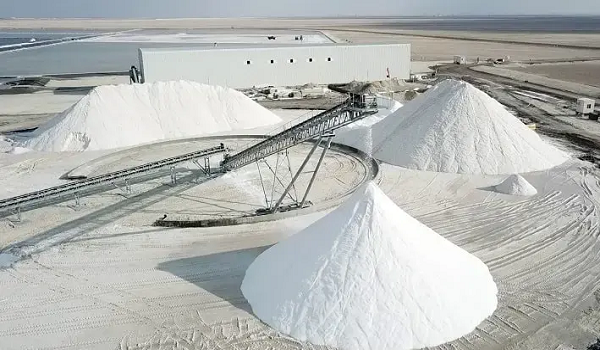The global salt market is experiencing rapid expansion, driven by growing demand across a variety of sectors, including food, chemicals, and industrial applications. Salt, primarily composed of sodium chloride (NaCl), is crucial not only for human health but also in industrial processes and the food and beverage industry. Given its wide range of uses, the market is forecasted to grow at a compound annual growth rate (CAGR) of 3.9%, rising from $23.34 billion in 2023 to $32.41 billion by 2033.
In the food and beverage industry, salt remains indispensable as a preservative and flavour enhancer in processed foods, snacks, and ready-to-eat meals. Urbanization and increasingly hectic lifestyles are contributing to the rise in demand for packaged foods, while health-conscious consumers are turning toward alternatives like sea salt and Himalayan pink salt, which has fuelled the growth of premium salt products.
Salt’s significance extends to industrial applications, particularly in the chemical sector where it is used to produce chlorine and caustic soda—essential components in manufacturing plastics, textiles, and other materials. Salt also plays a vital role in water treatment and glass production, with growing industrial activities further driving demand.
However, environmental concerns and regulatory challenges pose significant obstacles. Traditional salt extraction methods have been criticized for their environmental impact, leading governments to impose stricter regulations and urging companies to adopt more sustainable practices, which could slow market growth.
Health concerns related to high sodium intake, including hypertension and heart disease, are also prompting consumers to shift toward low-sodium diets. This trend presents a challenge to the traditional salt market, especially in processed food applications.
Weather volatility, driven by climate change, is another factor affecting salt production. Solar evaporation—a common method for salt production—relies heavily on favourable weather conditions. Extreme weather events like excessive rainfall can disrupt production, impacting supply chains.
In response to these challenges, companies are increasingly adopting eco-friendly salt production methods, such as solar evaporation, while introducing organic and unprocessed salts that appeal to health-conscious consumers. Premium salts are gaining popularity, particularly in the food and beverage industry.
To meet the growing global demand, key players are expanding their production capacities, particularly in salt-rich regions such as South America, Africa, and Asia. These expansions are accompanied by efforts to strengthen distribution networks, especially in emerging markets.
Innovation continues to play a key role in the industry, with companies developing low-sodium and flavoured salts to address changing consumer preferences. In the industrial sector, advances in salt-based de-icing technologies are improving efficiency and reducing environmental impact.
The global salt market is set for continued growth, driven by rising demand across the food, industrial, and de-icing sectors. While environmental and regulatory hurdles remain, companies that embrace sustainable practices and product innovation will be well-positioned to thrive in this evolving market.


